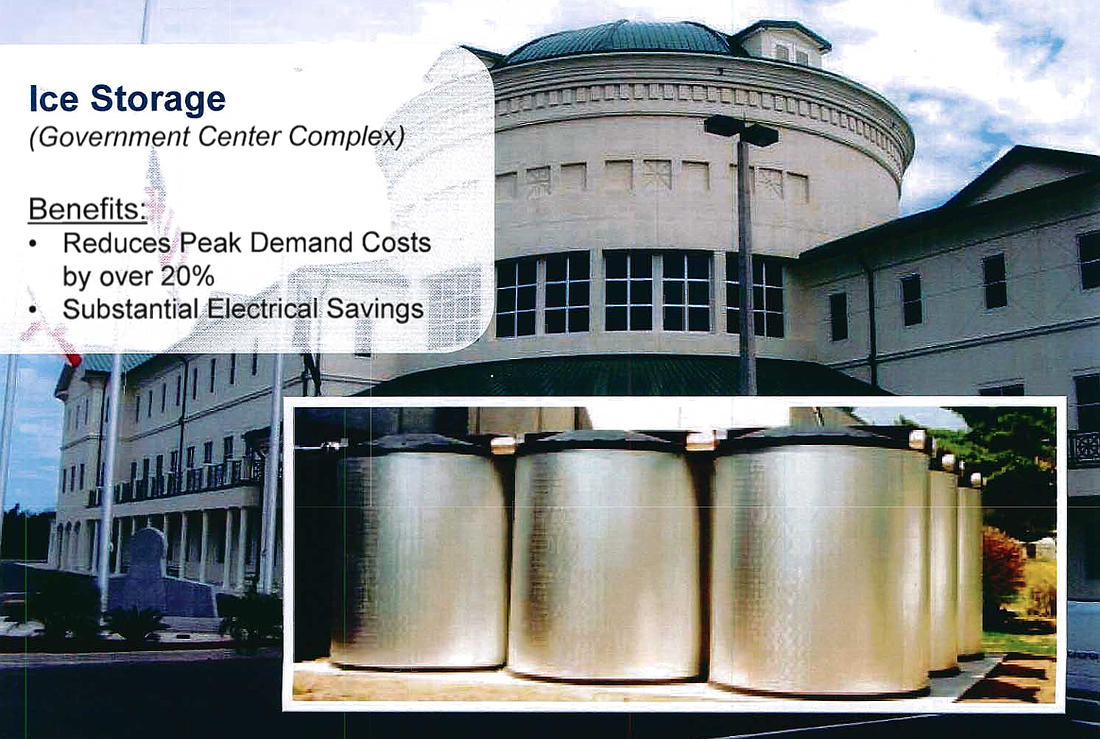- January 31, 2025
-
-
Loading

Loading

Should Flagler County run government structures with solar energy? Cool them with geothermal conversion? Install a solar parking canopy with stations to charge electrical cars?
They’re all options. But there’s a downside: They would require Flagler County to contract with a single company for more than a decade to realize potential long term costs, on expensive technology that’s still rapidly changing.
Flagler has already worked on small-scale changes like moving to more energy-efficient lighting. But large projects would require specialists to design and construct, and for the first few years — or even the first 15 or 20 — after construction, money saved on energy would be going to pay back the cost of the projects.
The county government invited green energy company Energy Systems Group, a subsidiary of the Vectern electric and gas company, to come to a County Commission workshop April 4 and suggest possible projects.
“We looked at this facility, we talked to the energy manager here, and (ESG Senior Performance Engineer Kishore Prabhu) came up with a number of possibilities that we’re pretty excited about,” ESG Business Development Manager Tracie Lampton said.
Among those possible projects are: cooling the Government Services Building with geothermal conversion, which ESG representatives said would decrease water usage and increase chiller energy; using ice storage tanks that would create ice at night and then use the ice for cooling during peak hours during the days, reducing the county’s expensive peak-hour energy usage; using diesel/natural gas generators to lower peak-time electrical costs; and adding a solar parking canopy in front of the administration building, possibly with charging stations for electric cars.
ESG representative Steven Downes said those strategies could save the county $175,000 per year, if the county used the system for 15 to 20 years.
Converting the Government Services Building itself to solar would be difficult because the building narrow and tall rather than low and wide, meaning it has limited horizontal surface area that could be used for solar panels.
Solar is in some ways perfect for government, which works primarily in the day when the sun’s shining, County Administrator Craig Coffey said. But, he said, “the challenge is, the technology is changing rapidly in solar; the payback is still out there, but it’s getting better."
The county administration will send out a request for quotes to let ESG and other green energy companies submit bids.